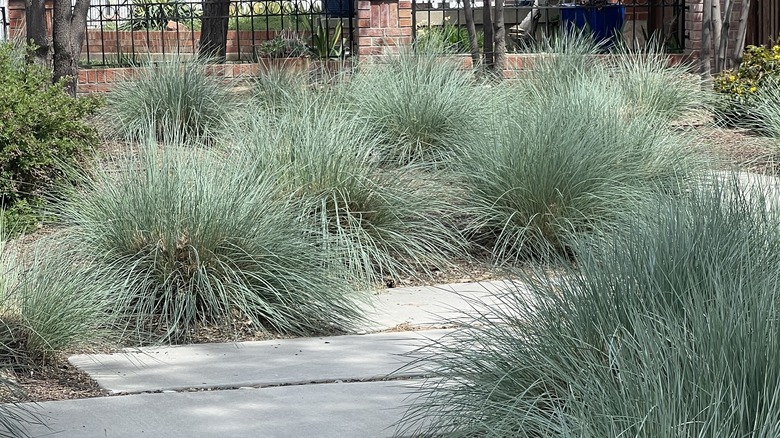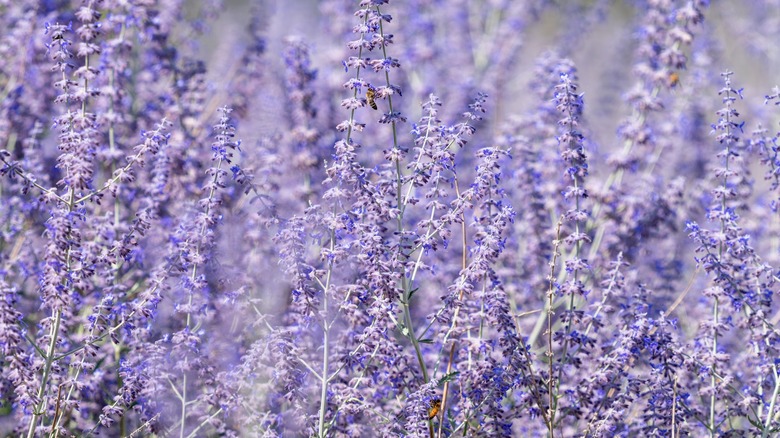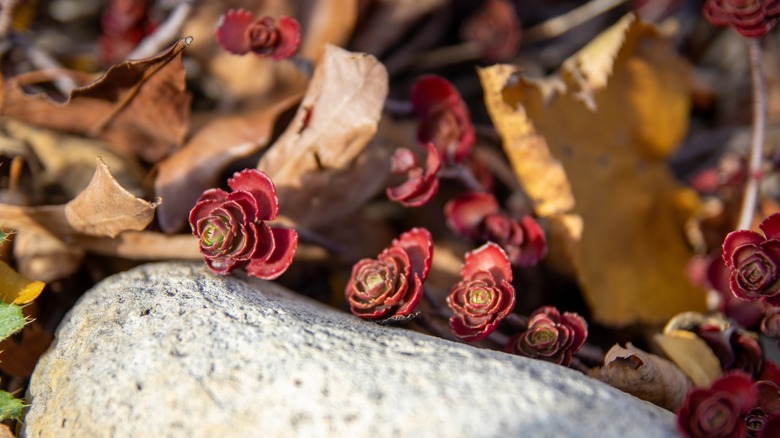Low-Maintenance Companion Plants That Make Blue Oat Grass Look Even Better
Blue oat grass (Helictotrichon sempervirens) is one the fastest and easiest ways to add a pop of unexpected color to a garden or landscape. As beautiful as blue oat grass is, you can create an even more distinctive and elegant garden by pairing your blue oat grass with other plants that thrive under similar conditions. Whether you opt to combine your blue oat grass with plants that display similarly blue tones like 'Blue Star' juniper (Juniperus squamata 'Blue Star') or Russian sage (Salvia yangii), or instead choose plants that provide contrast like the bold orange 'Acapulco Orange' (Agastache spp.)or even a sedum (Sedum spp.) with bronze foliage, pairing your blue oat grass with other plants can help take your garden from beautiful to absolutely stunning.
Native to Europe, blue oat grass is a perfect low-maintenance grass for adding color and life to dry and sunny or partly sunny spots in your landscape. Thanks to its high tolerance for drought and pollution, it can be perfect for gardeners looking to jump on the xeriscaping trend and grow a drought-tolerant landscape. It keeps its leaves year-round in many zones, ensuring your garden can keep looking lush even when temperatures drop. Hardy in zones 4 through 8, blue oat grass is perfect for pairing with similarly drought-tolerant and sun-loving plants.
Pairing blue oat grass with other blue plants and flowers
Combining blue oat grass with other plants that display blue or gray tones can help turn your garden into a calm and serene oasis. Pairing your blue oat grass with 'Blue Star' juniper, another blue-hued plant that also thrives in dry, sunny gardens in zones 4 through 8, is a perfect way to ensure your garden remains evergreen (or everblue) even if you live in a cooler region where your blue oat grass loses its color during the winter. 'Blue Star' juniper is a dwarf cultivar that, much like blue oat grass, generally doesn't grow taller than around 3 feet.
Another way to add calming tones to your garden is through Russian sage. This small shrub grows to around 4 feet tall and boasts purple flowers and grayish-silver leaves. Like blue oat grass and 'Blue Star' juniper, it thrives in dry and sunny garden spots. Hardy in zones 5 through 9, Russian sage can be a great addition to blue oat grass.
Pairing blue oat grass with bold orange plants and flowers
Of course, growing blue oat grass doesn't mean you're required to have an entire landscape of similarly colored plants. One of the best ways to make a color pop is by pairing it with the shade across from it on the color wheel. The shade across from blue-green on the color wheel is red-orange, making flowers and foliage with this shade the perfect addition to blue oat grass. A charming herbaceous perennial to pair with blue oat grass is agastache. This plant not only loves the sun and tolerates dry conditions, but it's also hardy in zones 5 through 10. Depending on the cultivar, it can have flowers in a variety of shades of orange.
Another great plant to pair with blue oat grass is sedum. This genus of succulents flourishes in sunny spots with dry soil, just like blue oat grass. Depending on your preference, you can use a low-growing sedum as a year-round ground cover or opt for a taller variety. With cultivars hardy in zones 3 through 9 and foliage in various shades, from blue to bronze, you're sure to find a sedum to pair with your blue oat grass, regardless of the style and color palette you're going for.


